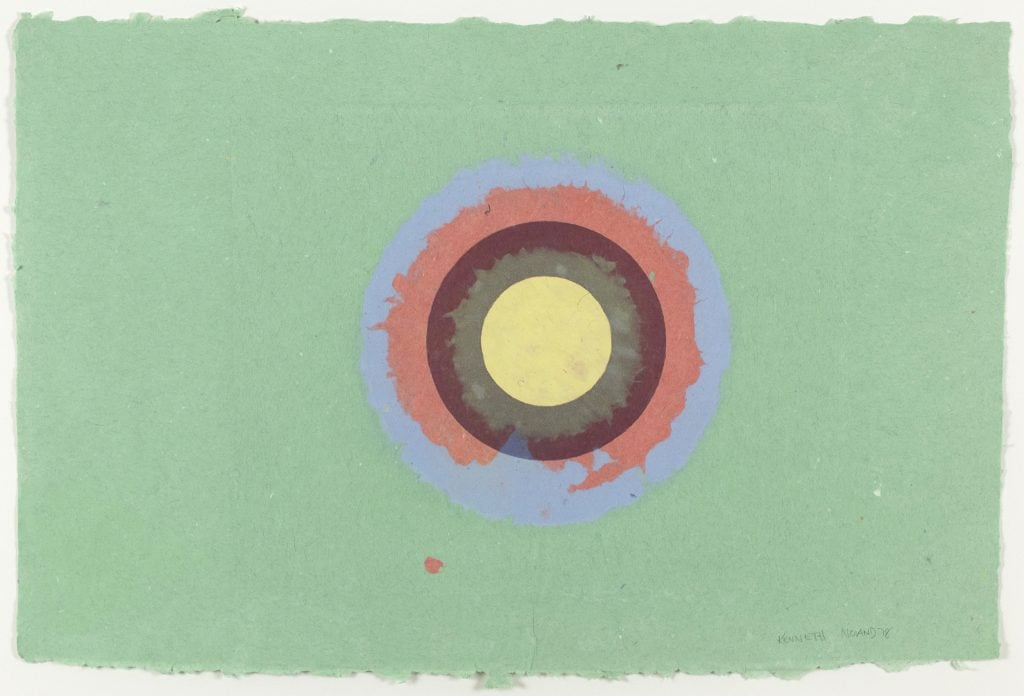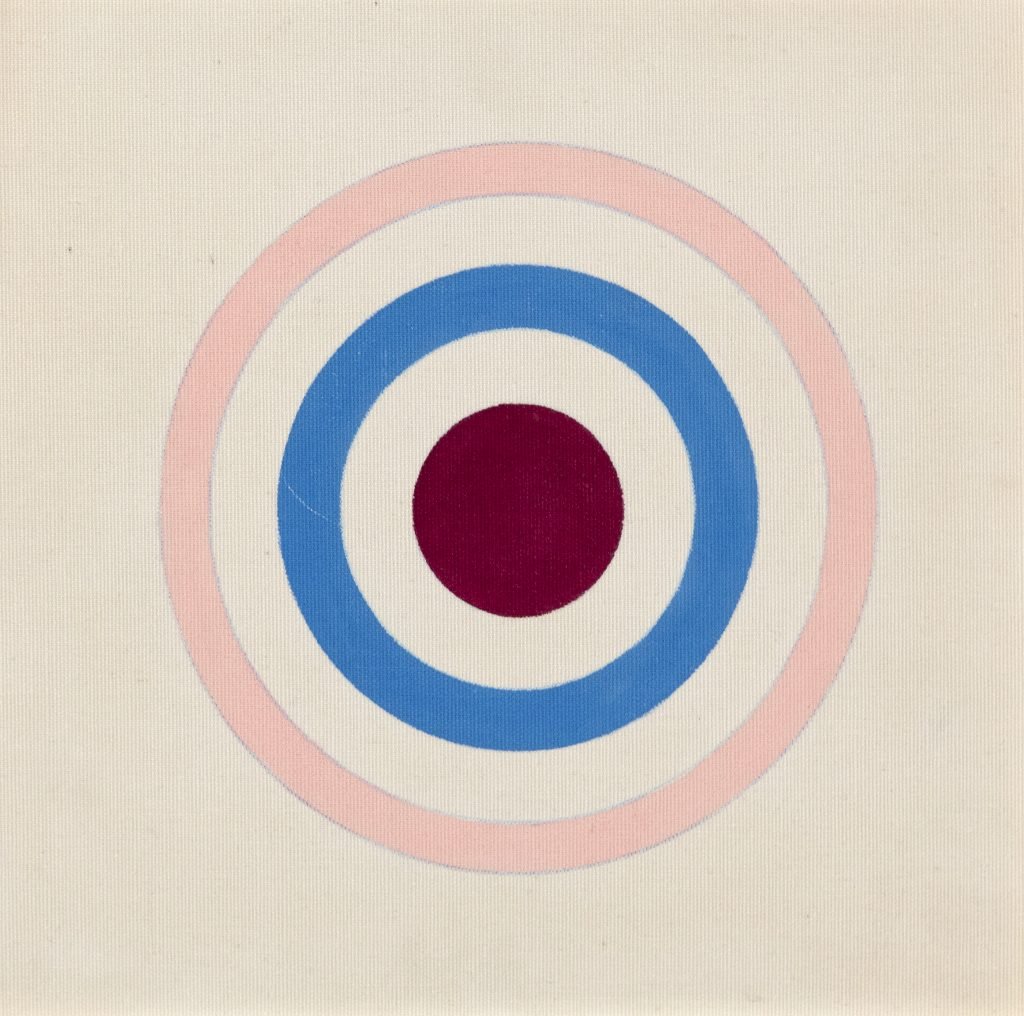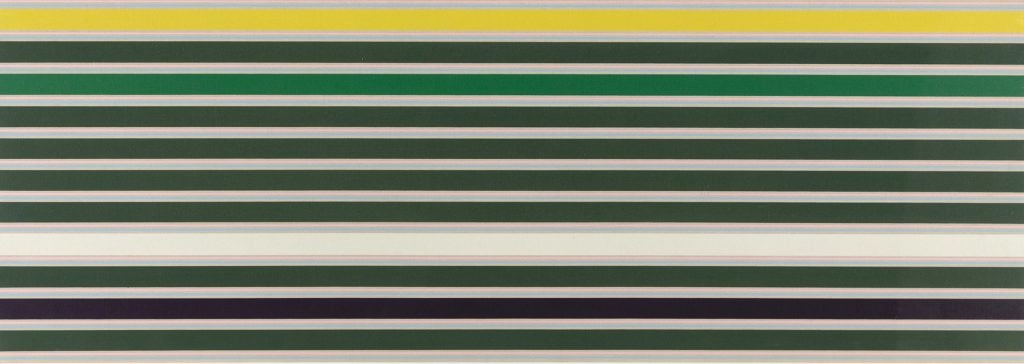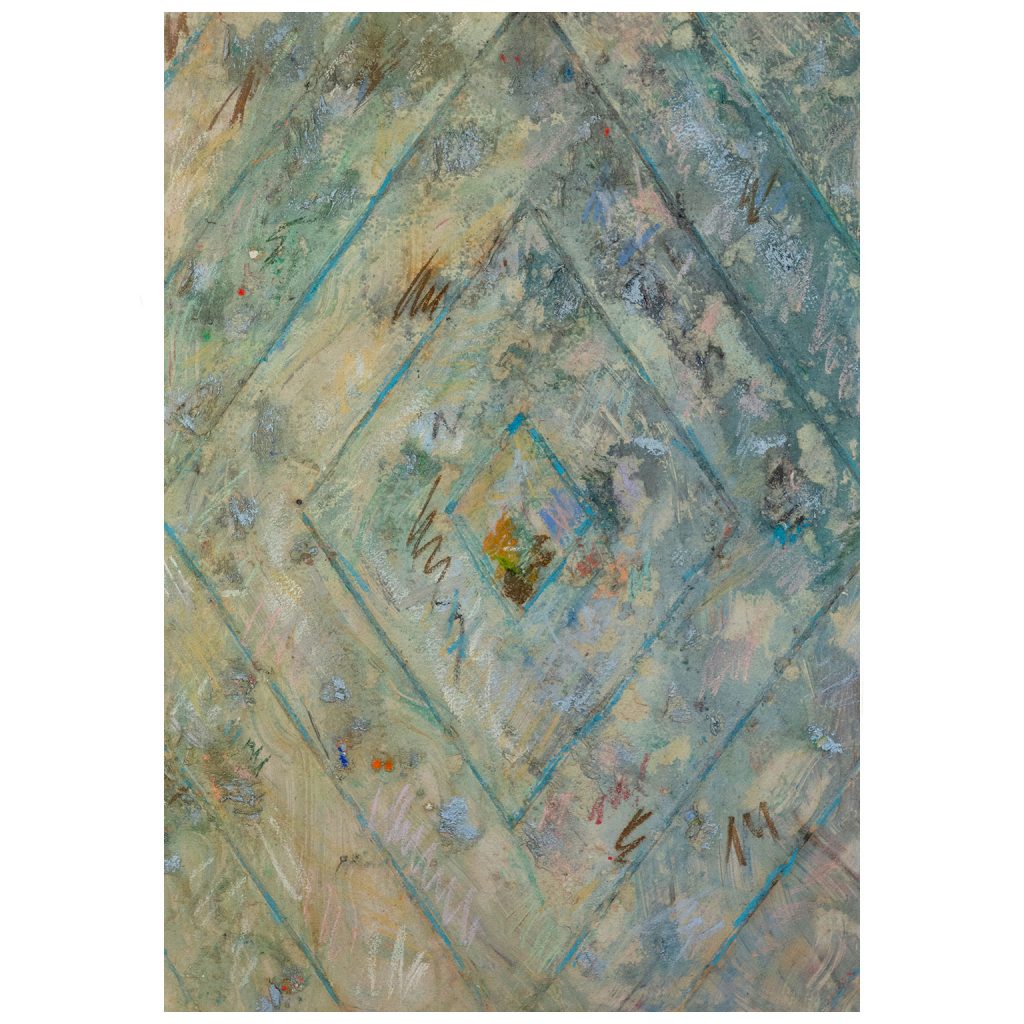Gallery Network
Spotlight: Color Field Pioneer Kenneth Noland’s Works on Paper Get a Solo Outing in Toronto
On view in Toronto at Caviar20, the exhibition highlights the artist's distinctive works on paper.

On view in Toronto at Caviar20, the exhibition highlights the artist's distinctive works on paper.

Artnet Gallery Network

Every month, hundreds of galleries add newly available works by thousands of artists to the Artnet Gallery Network—and every week, we shine a spotlight on one artist or exhibition you should know. Check out what we have in store, and inquire for more with one simple click.
What You Need to Know: On view through June 29, 2024, Toronto-based gallery Caviar20 is presenting the solo exhibition “Kenneth Noland on Paper.” Featuring examples of Noland’s prints, hand-painted books, as well as highlighting his use of handmade paper from the late 1970s, the show delves into this lesser-known aspect of the artist’s practice. For both followers of Noland and those new to his work, “Kenneth Noland on Paper” provides meaningful insight into his explorations of color and shape, as well as helps contextualize his artistic lines of inquiry outside of his paintings on canvas. Bringing his work in person to a local audience, the pieces within the show are also available to view online with the gallery.

Kenneth Noland, Untitled (Painted Book) (1977). Courtesy of Caviar20.
About the Artist: American artist Kenneth Noland (1924–1985) was a leading American color field painter and founding member of the Washington Color School movement alongside artist Morris Louis. Though early in his career he engaged with Abstract Expressionism and Minimalism, Noland ultimately developed a style centered on explorations of color and shape, inspired by his studies of color theory under Josef Albers at the seminal Black Mountain College in the 1940s. Frequently employing a “soak-stain” technique, which was inspired by Helen Frankenthaler, whose studio he visited in 1953 at the behest of critic Clement Greenberg, his canvases are noted for their deep, saturated pigments. He was the subject of a major travelling retrospective initiated by the Solomon R. Guggenheim Museum, New York, where his work is also part of the permanent collection.

Kenneth Noland, Shadow Line (1969). Courtesy of Caviar20, Toronto.
Why We Like It: While Noland’s paintings are perhaps the artist’s most well-known works, the intimate scale and textural quality of his works on paper offer deeper insight into the core artistic elements he explored over the course of his career, and sheds light on his creative proficiency. Pieces such as Circle II (Sea Foam Circle II) (1978) is comprised of layers of handmade paper pulp and monotype lithograph printing, resulting in a work that has a visual depth and tactility not achieved in his other works. Though meticulous, the errant pink pigment outside of the central circles speaks to a balancing of careful execution and creative spontaneity. Further, featuring one of his hallmark circle, Untitled (Painted Book) (1977), and stripe, Shadow Line (1969), compositions illustrate how Noland’s mastery of his artistic vernacular translates across mediums.

Kenneth Noland, from the “Bravo Costa Brava” series (“Pistachio”) (1983). Courtesy of Caviar20, Toronto.
“Kenneth Noland on Paper” is on view at Caviar20, Toronto, through June 29, 2024.